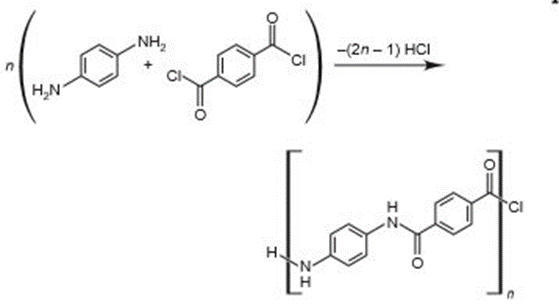Kevlar®, a polymeric aromatic amide, is synthesized from the monomers p-phenylenediamine (left) and terephthaloyl chloride (right). The polymer strands are initially aligned randomly, but they are dissolved and spun to give a lightweight, flexible product that is five times stronger than steel of the same weight

The first step in the reaction of an amine with an acid chloride is

(a) Describe this step in terms of a Lewis acid-base reaction.
(b) Would you expect water or ammonia to react faster with an acid chloride? Explain





